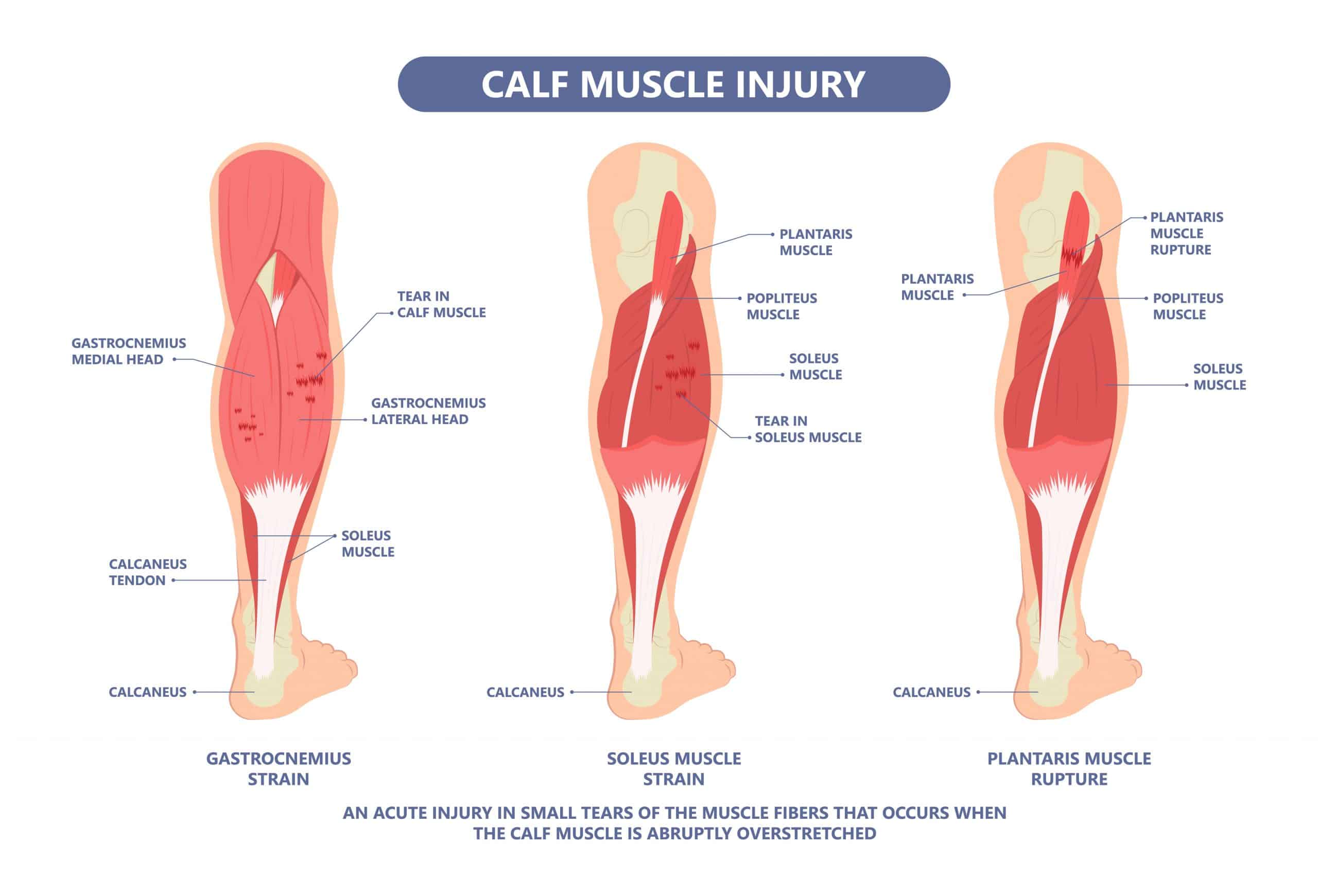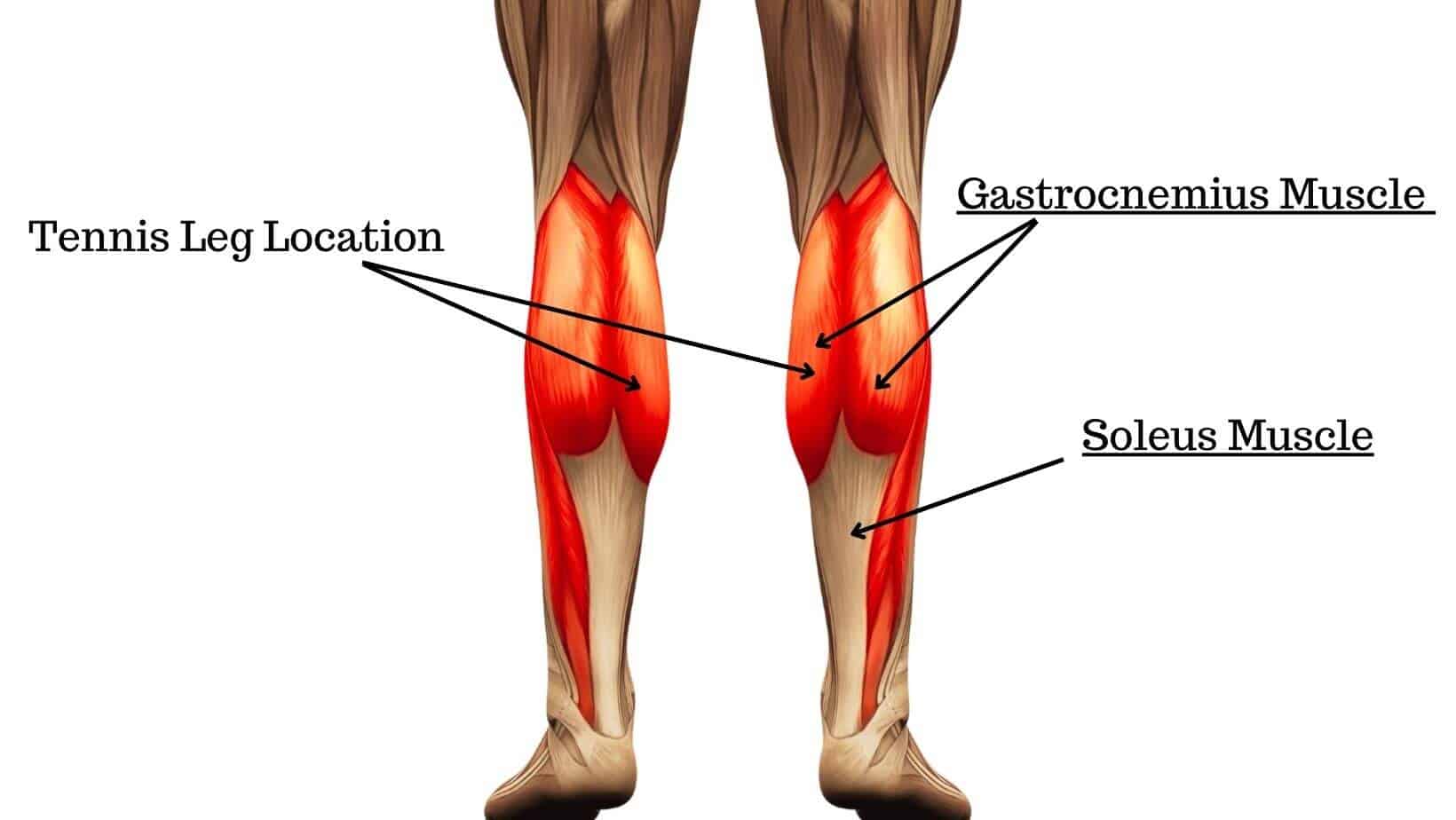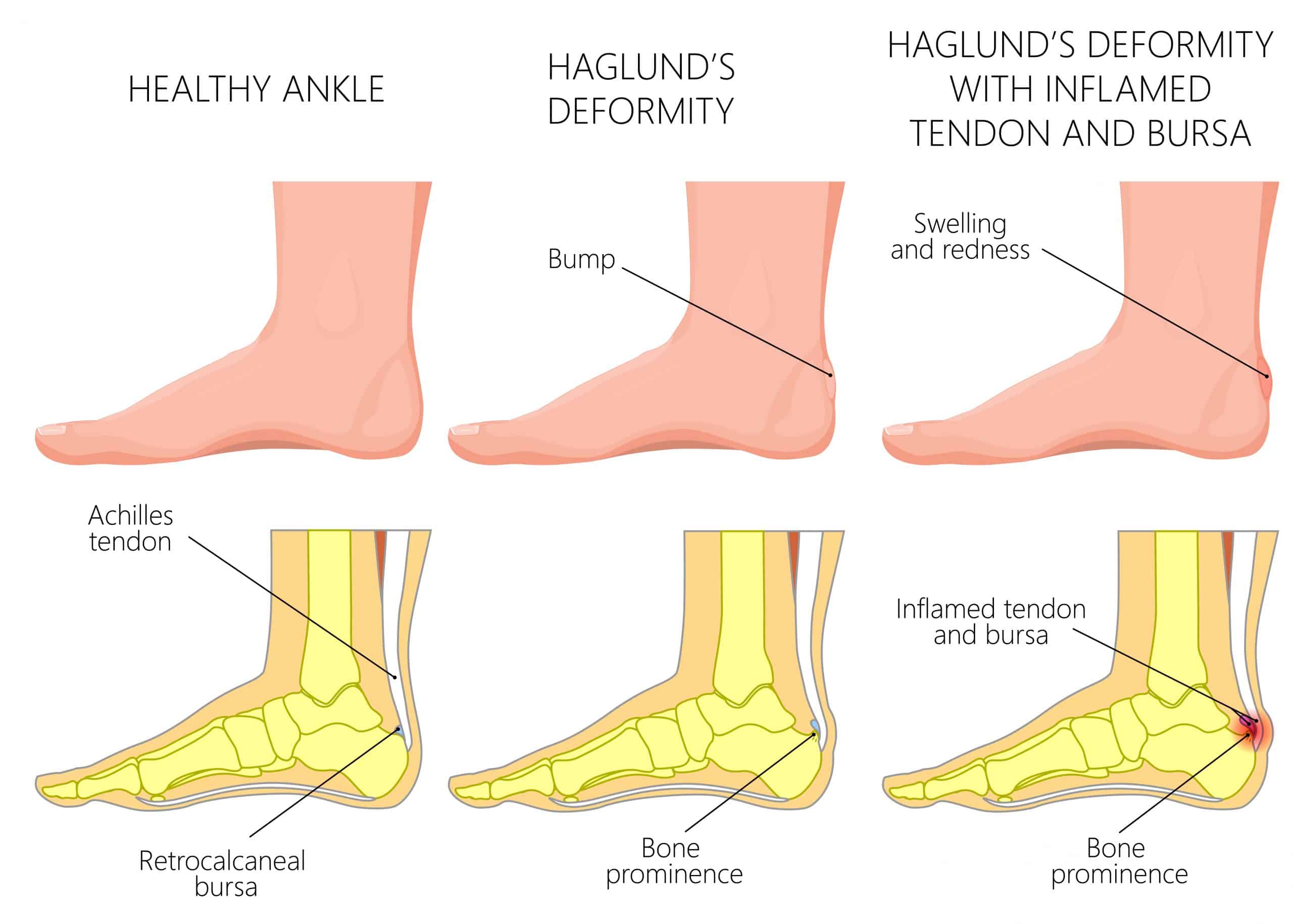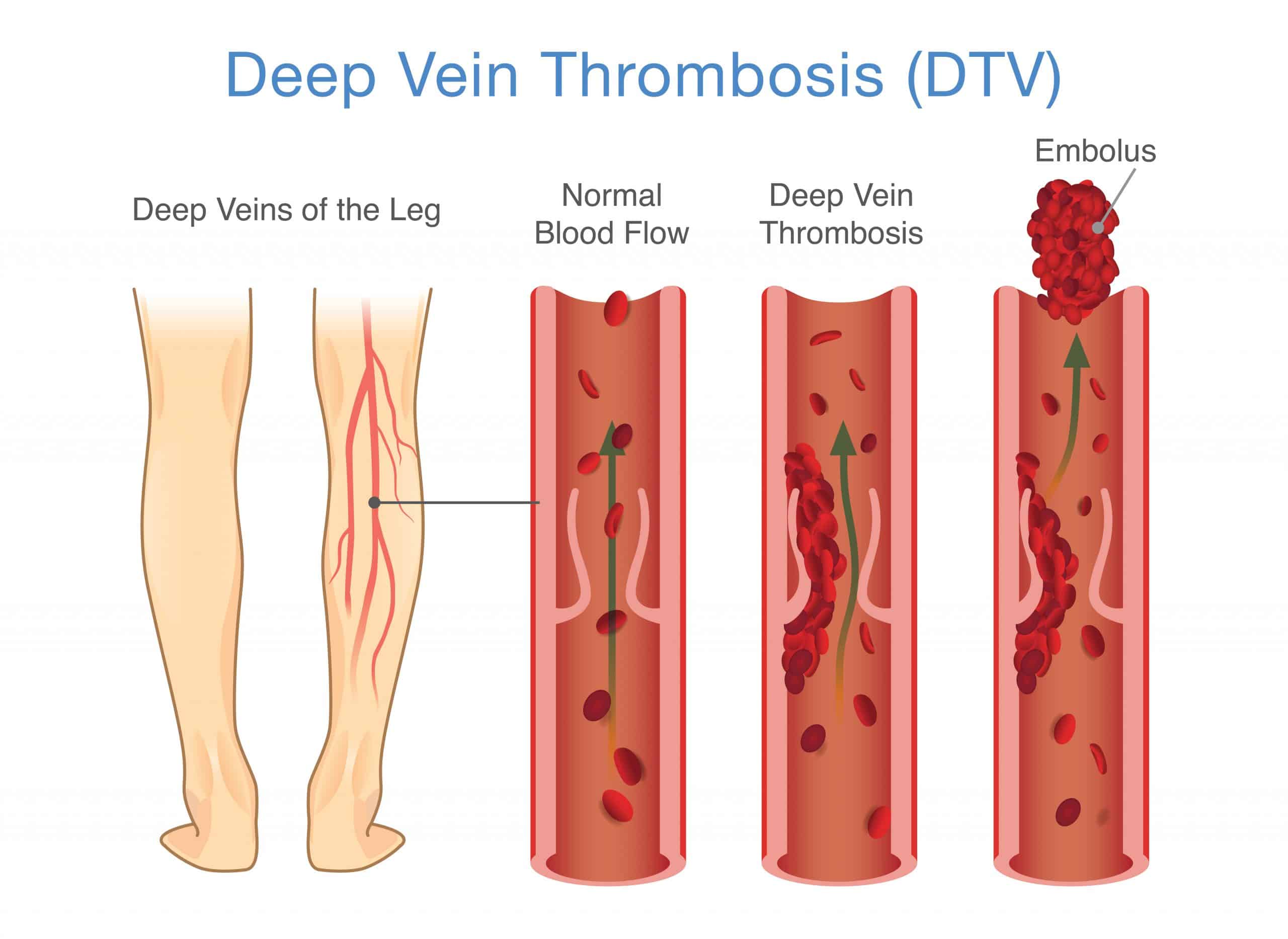Achilles Tendinopathy: Achilles Tendon Pain
Read More >
The calf muscle group consists of two muscles; the soleus is long and flat and works predominantly when the knee is bent to lift the heel and the Gastrocnemius which sits on top of the soleus. The Gastrocnemius crosses over the knee and ankle, assisting with lifting the heel and straightening the knee, and works hardest when pushing off in activities such as sprinting. When either of these become injured they can cause calf muscle pain.
In this article, we will cover all the conditions that could cause calf muscle pain and how to treat calf muscle pain.
Calf Muscle Tears, tightness, cramping, and ruptures can occur in both the Soleus and Gastrocnemius muscles. If you have any symptoms of calf pain, we always recommend that you see a medical professional such as a Sports Medicine Doctor.
Symptoms of calf pain include:

The Soleus muscle is a large flat muscle on the back of the lower leg. It assists in lifting the heel and is a vital ankle stabiliser. A soleus muscle tear is often a low-level progressive pain that worsens with activity. In acute tears of the soleus, there is rarely a sharp, sudden pain that stops you in your tracks.
During a run, it can often be confused for calf tightness or cramping when it is a muscle tear. Symptoms may worsen with activity to the point where it becomes too uncomfortable to continue.
Due to the deep nature of the Soleus Muscle, it is often difficult to pick up a Soleus Tear on an Ultrasound scan, and as a result, an MRI is a gold standard for diagnosis.
Treatment under the care of a Physical Therapist usually consists of gait analysis, advice on footwear, a thorough strengthening and stretching program, and a structured return to run. If there is a biomechanical fault, custom insoles may be recommended.
There are two heads of the Gastrocnemius Muscle: the medial (inner side) and lateral (outer side). Tennis leg refers to a tear or rupture of the medial head of the gastrocnemius. The gastrocnemius is under most strain when the knee is straight and ankle flexed; this is typically in a sprinting position, making this a common injury in tennis, sprinting, and football.
Tennis leg symptoms include an audible ‘popping’ noise followed by a sudden onset of sharp burning pain on the inner calf. The pain is often severe, causing the individual to stop the activity immediately without being able to return. Following injury, it can be painful to do a heel raise, especially when the knees are straight. It is tender to touch, and there may be a palpable dip in severe ruptures.
It is essential to see a medical professional as soon as possible to get the correct diagnosis. An ultrasound scan is crucial as the size and location of a tear will influence management and healing times. In severe cases. a walker boot may be required.
Treatment for tennis leg should be guided by a Physical therapist and involves soft tissue massage, stretches, progressive strengthening, and balance exercises.


Tendons attach muscle to bone, and the Achilles Tendon attaches the calf muscle to the heel bone. It is a common source of lower leg pain that can be irritated as a result of overload or overuse, leading to tendonitis.
Achilles Tendonitis is painful in the low aspect of the posterior shin. It is often sore and stiff in the morning after getting out of bed or walking after sitting for some time. It can be thickened or mildly swollen with tenderness when squeezed between the thumb and fingers. It can be painful at the start of a run, ease when warmed up but become painful once again in the hours after exercise.
A physical therapist can diagnose it clinically, and a heavy, slow load strengthening program is recommended for rehabilitation.
Deep Vein Thrombosis (DVT) is a less common but dangerous cause of calf muscle pain. It is the result of blood clot formation in the calf muscle. DVT is more common after surgery but can occur secondary to an acute injury.
We sometimes see this if a long-haul flight follows a calf muscle tear. Other risk factors include smoking, obesity, and medication complications.
If you have any symptoms of a DVT, you should see a medical doctor immediately.

Impact on the calf muscle when playing sport or a fall can cause a contusion, resulting in calf muscle pain. This is often the result of damage to tiny blood capillaries in the area of impact that results in skin discolouring.
This can be painful to touch and will all calf movements. Gentle stretching, swimming, or cycling alongside time to rest can help relieve the pain.
A muscle cramp can occur when there is a build-up of lactic acid in a muscle. When this happens, it can cause sudden sharp pain in the calf. As a result, it can be confused with a calf muscle tear.
It can be painful with a walk of dorsiflexing the ankle but should improve in the days following onset with gentle stretching and non-impact activity such as cycling or swimming.
If, after 72 hours, the same pain levels persist with impact activity, it is essential to seek a diagnosis to clarify the reason for persistent pain.
Back pain may be present, but it is not unusual to have leg pain only with sciatica. A referral of pain from your back can cause pain in the calf muscle. This may result from peripheral nerve entrapment or nerve root irritation in the lower back.
Symptoms include pain at rest and with activity. Night pain may be prevalent alongside numbness, pins and needles, and calf weakness.
Examination with a medical professional is recommended, and a mobility and strengthening program is often recommended after the correct diagnosis.
This article is written by James McCormack, a Lower Limb Specialist who is an expert in treating Calf Pain.
This is not medical advice. We recommend a consultation with a medical professional such as James McCormack if you are experiencing any of the symptoms discussed in this article. James offers Online Physiotherapy Appointments weekly and face-to-face appointments in his London clinic.